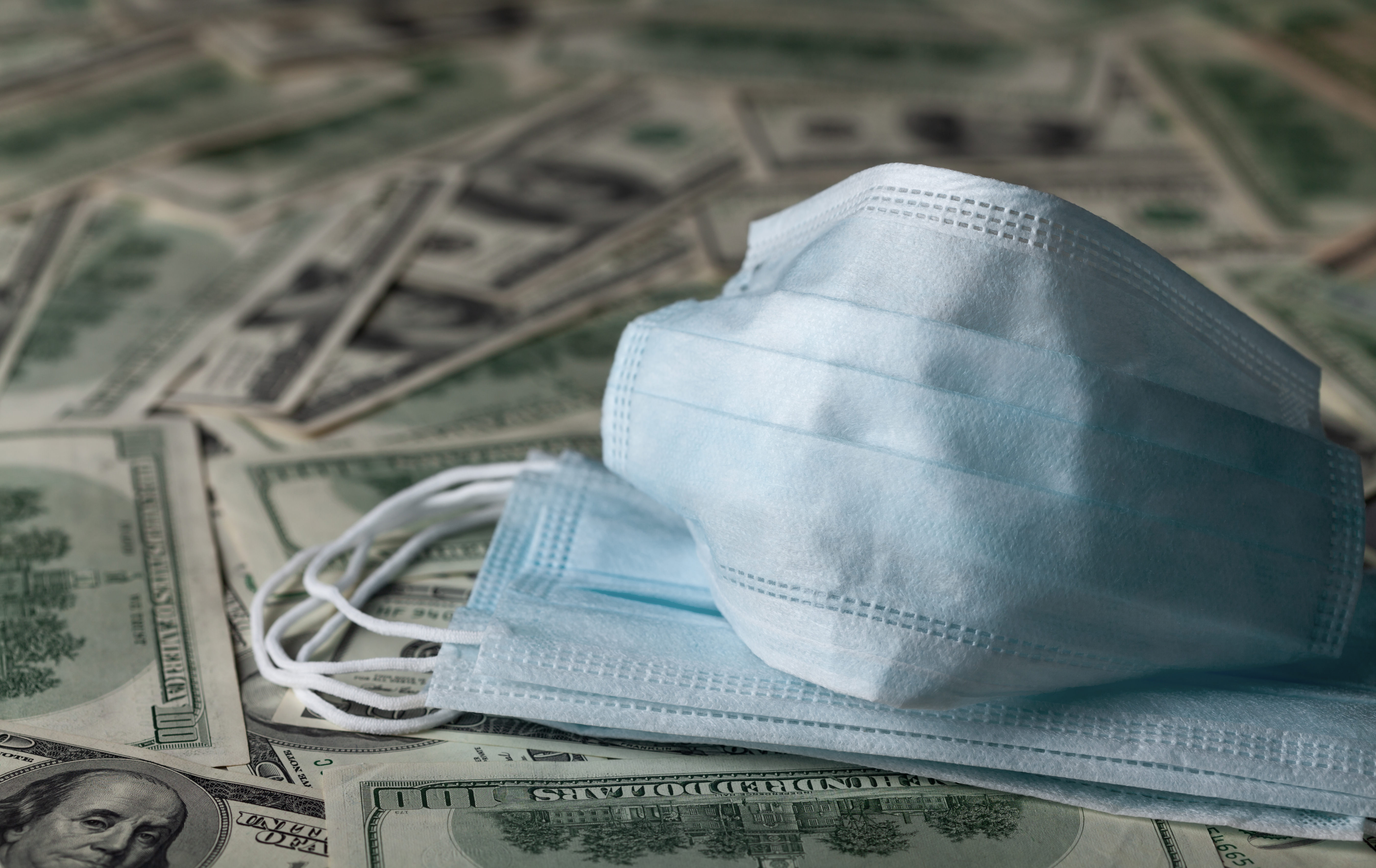When Georgia Tech Scheller College of Business Assistant Professor Daniel Weagley visited his in-laws over the summer, he expected to enjoy a home-cooked meal, catch up on family news, and relax. He didn’t expect to discover a unique way to research the implications of the COVID-19 crisis.
But that’s exactly what happened.
“When I visited my father-in-law at his medical practice,” said Weagley, “there was a room absolutely overflowing with personal protective equipment (PPEs). When I questioned him, he explained that they were going through gloves, masks, gowns, and other equipment at a rapid rate and investing large amounts of cash in a constant influx of increasingly expensive new inventory. As a finance professor, I immediately wondered about the relationship between COVID-19, cash flow, and working capital--and the idea for our study was born.”
Background
The Covid-19 pandemic disrupted nearly all parts of society. From elementary schools and small businesses to government agencies, hospitals, and university systems, all faced extraordinary challenges to incorporate new and dramatic health protection and contagion mitigation measures. Nursing homes, an industry whose customers are among the most vulnerable to health risks, quickly became the deadly vanguard and epicenter of the early U.S. COVID-19 pandemic. By the end of 2020, there were over 130,000 COVID-19 deaths in nursing homes and other long-term care facilities in the United States. Despite making up less than one percent of the overall population, nursing homes have accounted for over one-third of the U.S. death toll.
The COVID-19 health struggle created a financial vicious circle for nursing homes. Throughout the pandemic, prices for PPE equipment, labor, and high-frequency testing supplies and services soared--at the same time nursing homes lost income due to a decrease in both new long-term residents and Medicare patients admitted to recuperate after elective surgical procedures.
The Study
To help us better prepare for the next crisis, Weagley worked with Taylor A. Begley, an assistant professor of finance at Washington University in St. Louis to establish the relationship between the finances of nursing homes and COVID-19 incidence. They published the results of the study in their paper, Firm Finances and the Spread of COVID-19: Evidence from Nursing Homes.
“Our research is intended to open up new dimensions and research impacts through an examination of how nursing homes’ liquidity and exposure to cash flow shocks are related to higher incidences of COVID-19,” explained Weagley.
They began with two hypotheses:
- Firms with less liquidity (cash on hand) will likely struggle and be the least effective in protecting their customers from risk; and
- Nursing homes experiencing more adverse cash flow shocks, including loss of patient revenue due to lower patient intakes, would also be less effective in protecting their clients from risk.
“Basically, to combat COVID-19 effectively, nursing homes found they needed more liquidity in the form of either cash on hand or swift access to external financing like lines of credit,” said Weagley. “Instead, they faced a decrease in funds when they were most needed and firms with low liquidity and/or firms experiencing a large cash flow shock faced an uphill battle with regard to risk mitigation.”
Methodology
To get the necessary data, Weagley and Begley first examined data from the Health Care Cost Report Information System from the Centers for Medicare & Medicaid Services (CMS), containing operational and financial data on all skilled nursing facilities that accept Medicare or Medicaid. In addition, they used published COVID-19 nursing home data from the CMS, and COVID-19 case data by county from The New York Times.
Conclusions
Weagley and Begley found that nursing homes with lower pre-pandemic cash-on-hand and nursing homes that experienced a more adverse cash flow shock during the pandemic were more likely to have residents—and staff—that ended up with COVID-19. Their research provides empirical evidence that less financially stable firms who could not invest in significant risk mitigation efforts were more adversely affected than financially stable firms who heavily invested in risk mitigation efforts.
“Overall our results highlight the challenges in risk mitigation that firms and other organizations faced during the pandemic and the important role that liquidity and the ability to generate cash flow internally can play,” summed up Weagley. “These results shed new light on the propagation of COVID-19 and the important role that firms’ financial circumstances play in their customers’ lives.”
Future Directions
Ramifications of the study reach well beyond the current crisis.
“This groundbreaking research opens up several possibilities for future investigations,” said Business Analytics Center Managing Director Keith Werle. “Expanding and/or deepening the facility-based data and research, including race and ethnicity, staffing, and support/skills of the local workforce would be extremely valuable. Another important avenue could be to apply advanced analytics and machine learning to the very high dimensional data sets to determine what other attributes, correlations, and patterns might also be uncovered.”
To find out more about Weagley and Begley’s results and research methods, read the entire paper, Firm Finances and the Spread of COVID-19: Evidence from Nursing Homes.
